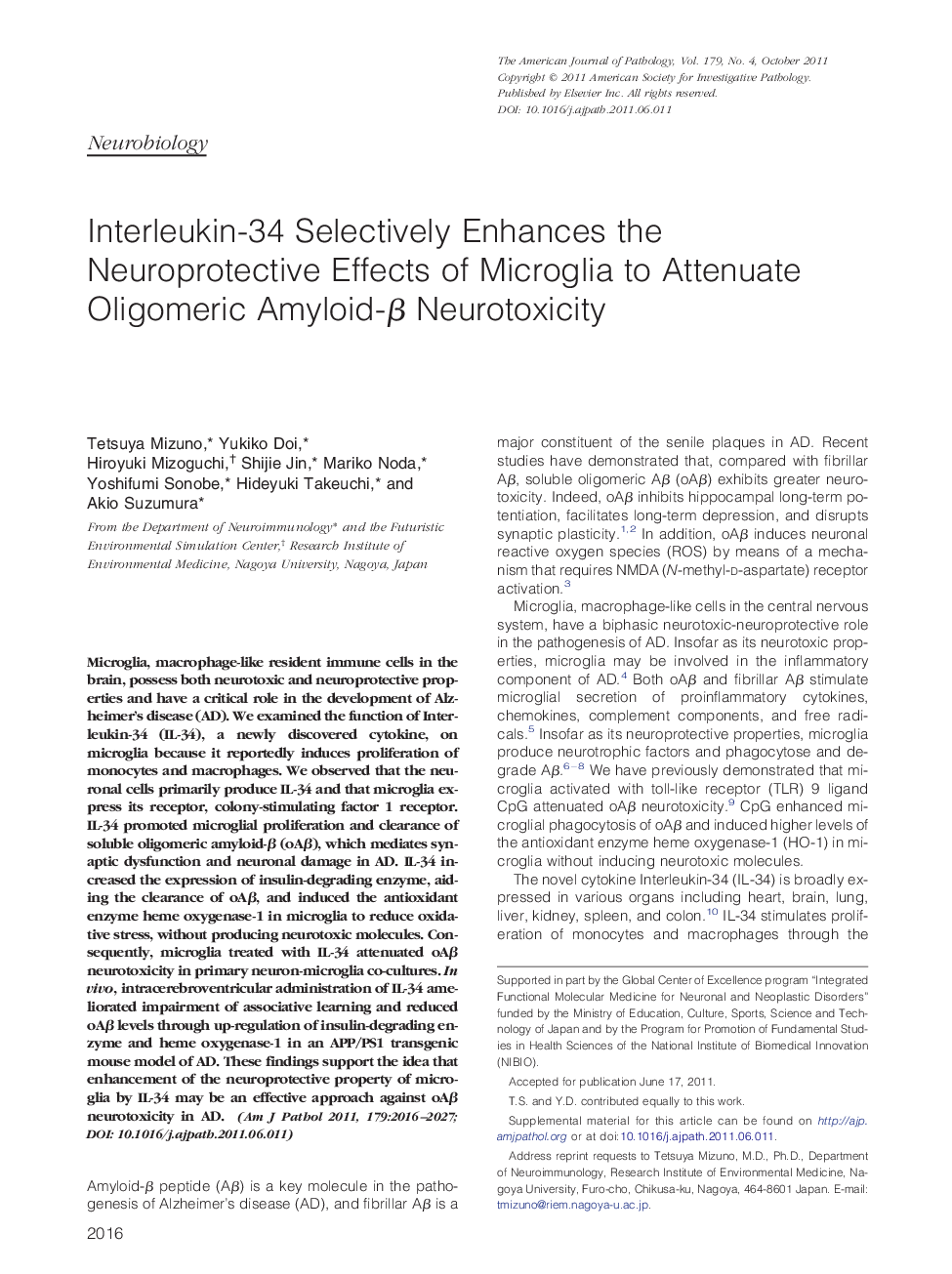| Article ID | Journal | Published Year | Pages | File Type |
|---|---|---|---|---|
| 5939297 | The American Journal of Pathology | 2016 | 12 Pages |
Abstract
Microglia, macrophage-like resident immune cells in the brain, possess both neurotoxic and neuroprotective properties and have a critical role in the development of Alzheimer's disease (AD). We examined the function of Interleukin-34 (IL-34), a newly discovered cytokine, on microglia because it reportedly induces proliferation of monocytes and macrophages. We observed that the neuronal cells primarily produce IL-34 and that microglia express its receptor, colony-stimulating factor 1 receptor. IL-34 promoted microglial proliferation and clearance of soluble oligomeric amyloid-β (oAβ), which mediates synaptic dysfunction and neuronal damage in AD. IL-34 increased the expression of insulin-degrading enzyme, aiding the clearance of oAβ, and induced the antioxidant enzyme heme oxygenase-1 in microglia to reduce oxidative stress, without producing neurotoxic molecules. Consequently, microglia treated with IL-34 attenuated oAβ neurotoxicity in primary neuron-microglia co-cultures. In vivo, intracerebroventricular administration of IL-34 ameliorated impairment of associative learning and reduced oAβ levels through up-regulation of insulin-degrading enzyme and heme oxygenase-1 in an APP/PS1 transgenic mouse model of AD. These findings support the idea that enhancement of the neuroprotective property of microglia by IL-34 may be an effective approach against oAβ neurotoxicity in AD.
Related Topics
Health Sciences
Medicine and Dentistry
Cardiology and Cardiovascular Medicine
Authors
Tetsuya Mizuno, Yukiko Doi, Hiroyuki Mizoguchi, Shijie Jin, Mariko Noda, Yoshifumi Sonobe, Hideyuki Takeuchi, Akio Suzumura,
